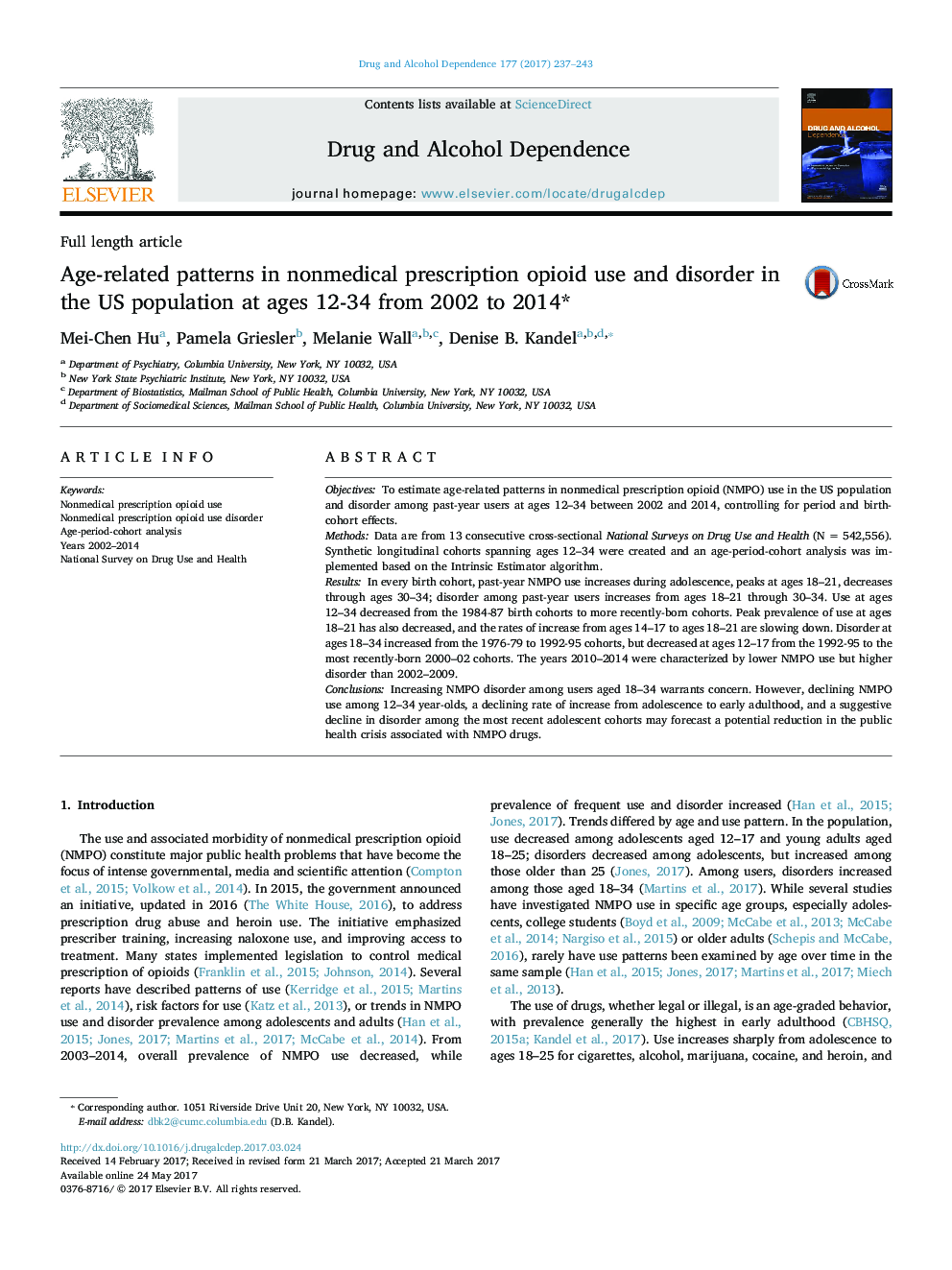| Article ID | Journal | Published Year | Pages | File Type |
|---|---|---|---|---|
| 5120047 | Drug and Alcohol Dependence | 2017 | 7 Pages |
â¢An age-period-cohort analysis spanning ages 12-34 was implemented.â¢Across birth cohorts, nonmedical prescription opioid use peaked at ages 18-21.â¢Use at ages 12-34 decreased from the older to more recently born cohorts.â¢Disorder increased in adults across cohorts, decreased for youth in recent cohorts.â¢These trends may forecast a reduction in nonmedical prescription opioid use burden.
ObjectivesTo estimate age-related patterns in nonmedical prescription opioid (NMPO) use in the US population and disorder among past-year users at ages 12-34 between 2002 and 2014, controlling for period and birth-cohort effects.MethodsData are from 13 consecutive cross-sectional National Surveys on Drug Use and Health (NÂ =Â 542,556). Synthetic longitudinal cohorts spanning ages 12-34 were created and an age-period-cohort analysis was implemented based on the Intrinsic Estimator algorithm.ResultsIn every birth cohort, past-year NMPO use increases during adolescence, peaks at ages 18-21, decreases through ages 30-34; disorder among past-year users increases from ages 18-21 through 30-34. Use at ages 12-34 decreased from the 1984-87 birth cohorts to more recently-born cohorts. Peak prevalence of use at ages 18-21 has also decreased, and the rates of increase from ages 14-17 to ages 18-21 are slowing down. Disorder at ages 18-34 increased from the 1976-79 to 1992-95 cohorts, but decreased at ages 12-17 from the 1992-95 to the most recently-born 2000-02 cohorts. The years 2010-2014 were characterized by lower NMPO use but higher disorder than 2002-2009.ConclusionsIncreasing NMPO disorder among users aged 18-34 warrants concern. However, declining NMPO use among 12-34 year-olds, a declining rate of increase from adolescence to early adulthood, and a suggestive decline in disorder among the most recent adolescent cohorts may forecast a potential reduction in the public health crisis associated with NMPO drugs.
